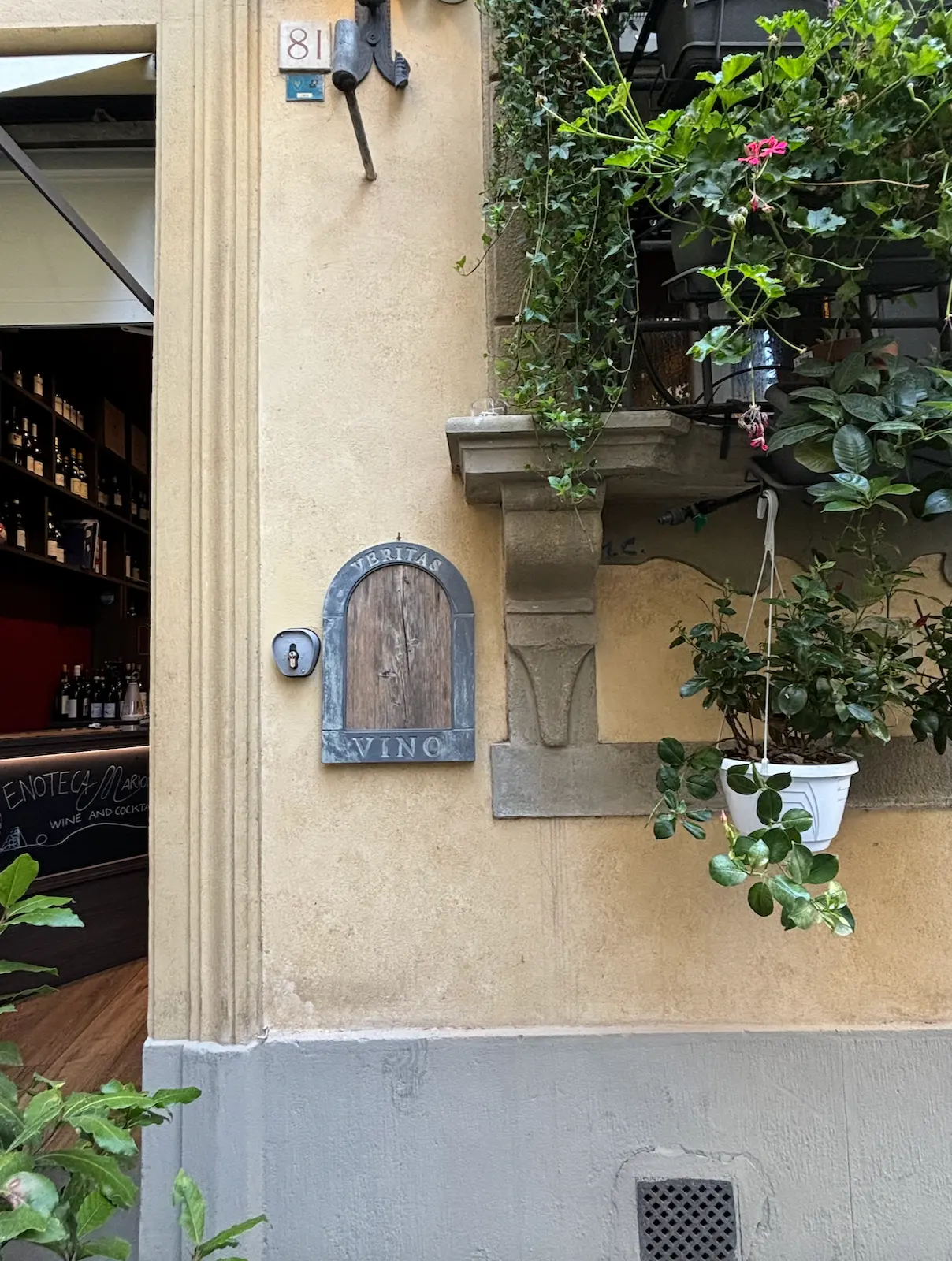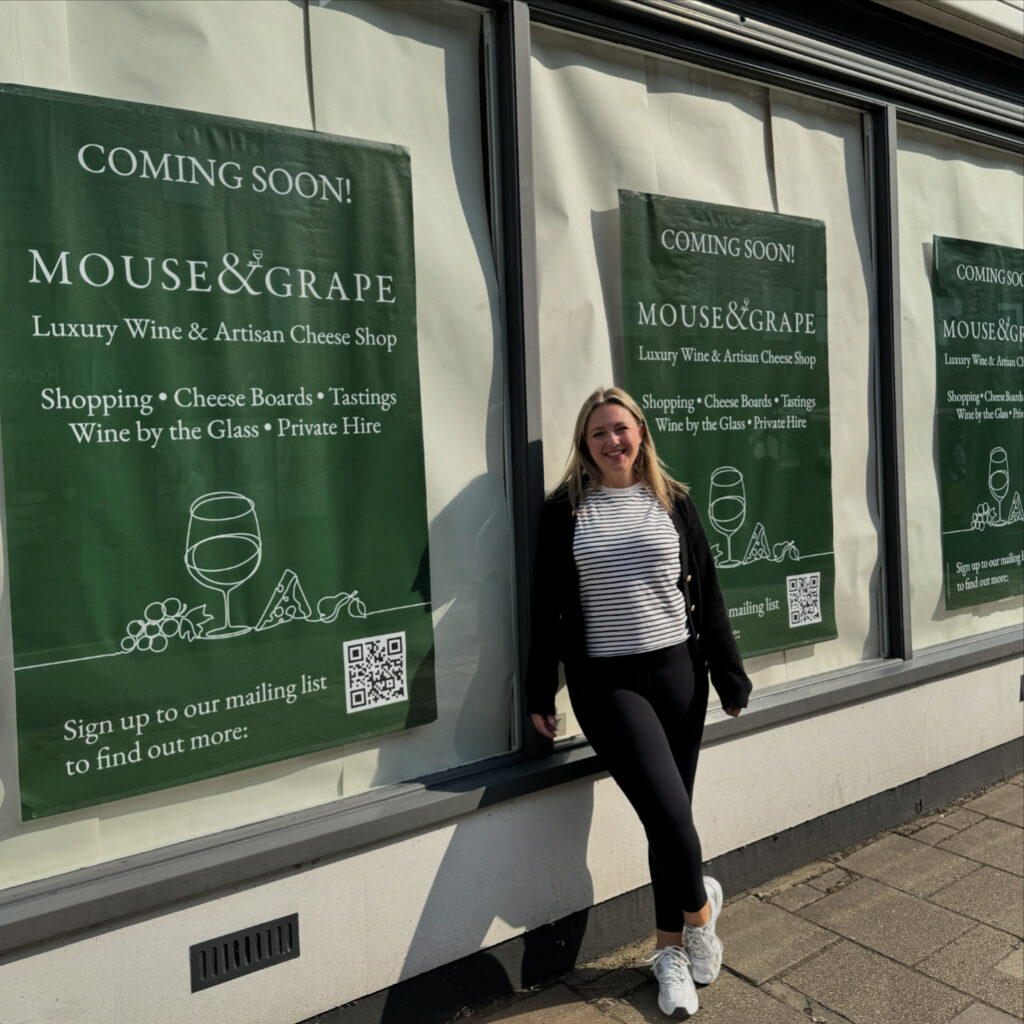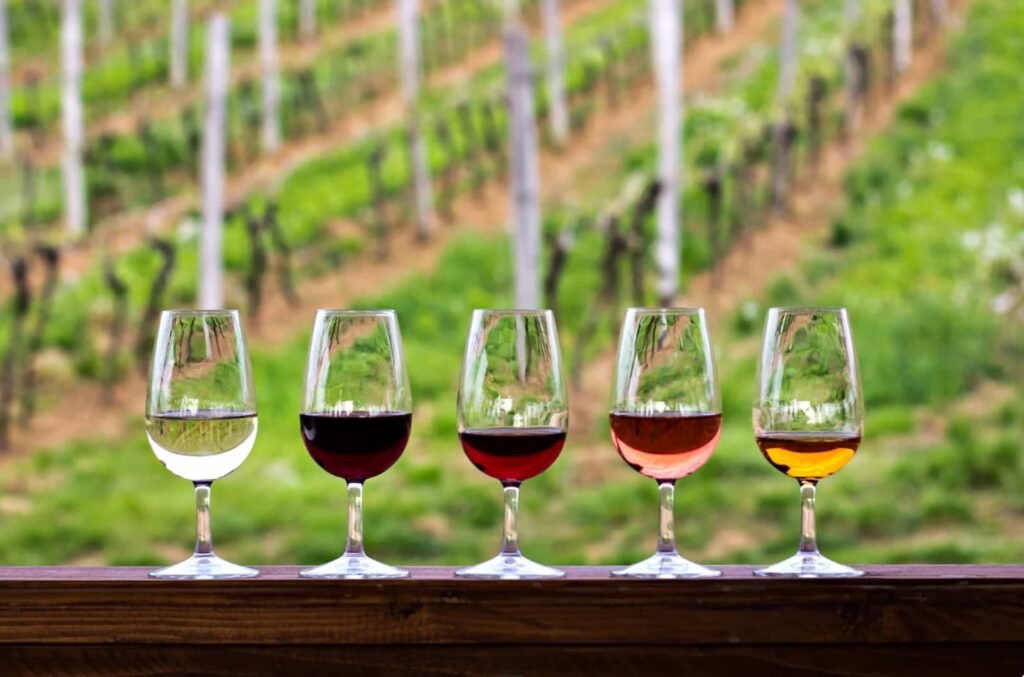I took a quick trip to Italy this summer, which included a day in Florence. Florence has become known for its infamous ‘wine windows’ so I knew I’d have to find one.
I was fascinated to find some of these wine windows have become commodified, designed to attract the attention of passersby – while others maintain their traditional subtlety, so subtle you would miss them if you weren’t looking.
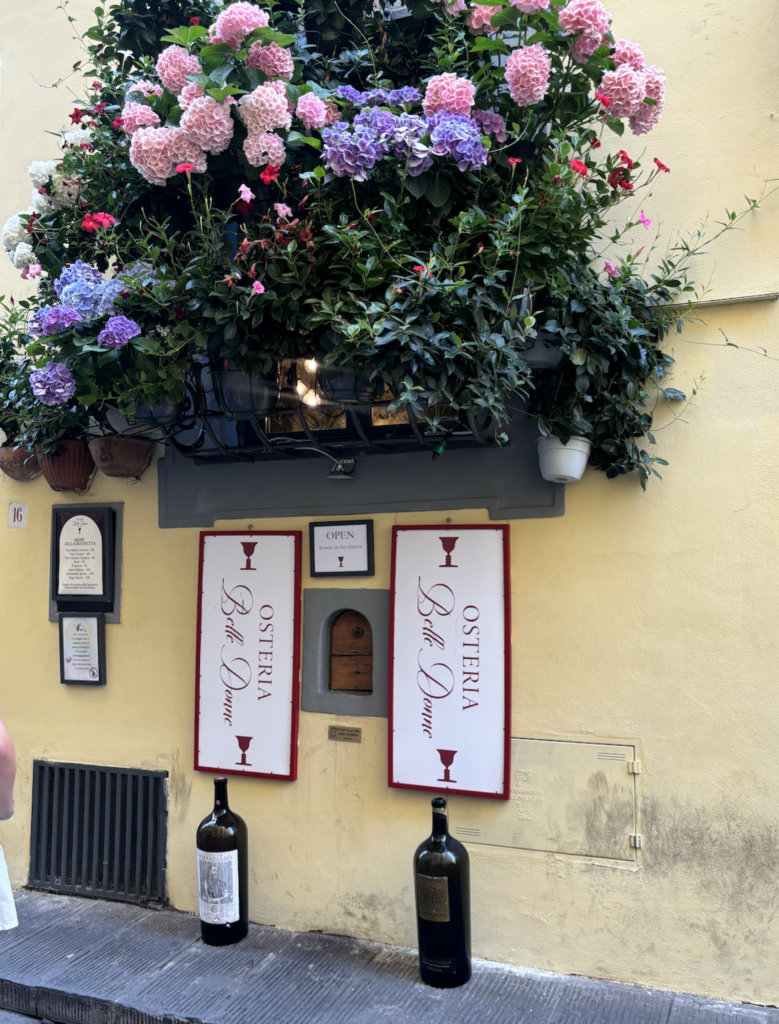
This was one wine window that stood out to me. I always thought the the windows were tucked away waiting to be discovered, but the reality is many have become commodified tourist traps.
A Brief History of ‘Buchette del Vino’
Wine has been produced in Tuscany for over 3,000 years and the tradition was continued by the Etruscans, Greeks, and Romans, and later through the Middle Ages and Renaissance.
From the 1400s until the 1700s, the Medici family remained affluent and powerful, ruling over Florence for several centuries. They dominated banking and commerce, were patrons of arts, and allowed for the proliferation of the Renaissance Era.
In 1559, Cosimo de’ Medici assumed the position of the Grand Duke of Tuscany. To appease local noble families, he created a law allowing these families to sell wine made at their country estates at their Florence city residences. This eliminated the need for intermediaries and allowed families to pay less tax. This created new ease for citizens as well who had newly affordable and convenient access to wine. Citizens could knock on the windows with flasks to be filled with wine in exchange for payment, which the nobles could keep tax-free.
During the 1600s, the Bubonic Plague infiltrated Florence and killed 12% of the population. These wine windows – or ‘Buchette del Vino’ – proliferated throughout the city, as they allowed shop owners to continue selling wine and food with minimal contact. Since its origins, wine has been widely considered to have medicinal properties, which remained true as the Plague spread throughout Europe.
Interestingly, during the COVID-19 Pandemic, many of these wine windows reopened, once again allowing shop owners to sell goods while minimizing contact with customers and reviving a Tuscan tradition. These windows have become especially popular among tourists since Stanley Tucci featured them in episode five of his series “Stanley Tucci: Searching for Italy,” which aired in 2021.
The wine windows of Florence tell the story of centuries of Italian history, an everlasting symbol of evolution.
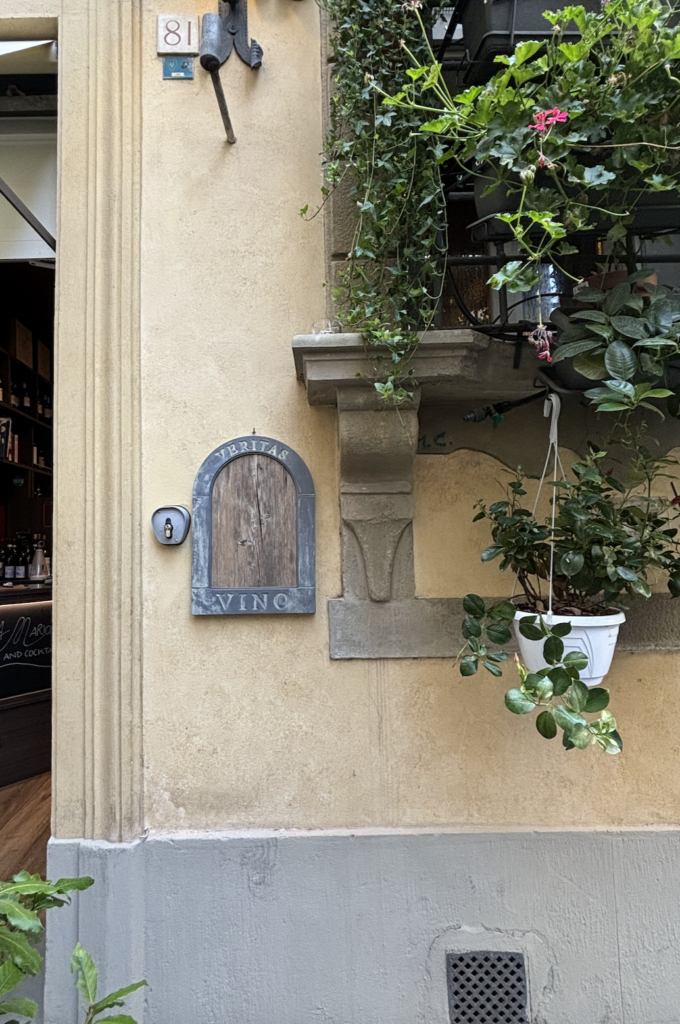
This wine window, while not actively being used, shows remnants of centuries of Tuscan tradition.
Inscribed are the words ‘Veritas Vino,’ referring to a Latin phrase “in vino veritas” which means “in wine there is truth.”
Guide to Tuscany as a Wine Region
Located in Central Italy, Tuscany makes up around 17% of the DOC production in Italy. Tuscany is home to 58 appellations, with a few of the most notable being:
- Chianti – with 8 subregions
- Brunello di Montalcino
- Vino Nobile di Montepulciano (which is different than Montepulciano d’Abruzzo from the Abruzzo region)
- Bolgheri
- San Gimignano
- Morellino di Scansano
Check out this great article for a map of Tuscany’s wine regions, appellations, and geography.
Grapes
In terms of grapes, Sangiovese is the most widely planted, accounting for around 85% of the region’s red wine volume. Cabernet Sauvignon, Merlot, and Pinot Noir are also grown in small quantities.
In terms of white wine grapes, Trebbiano is the most widely planted white grape, with a notable presence of Malvasia, and Vermentino, along with some international varieties like Chardonnay and Sauvignon Blanc.
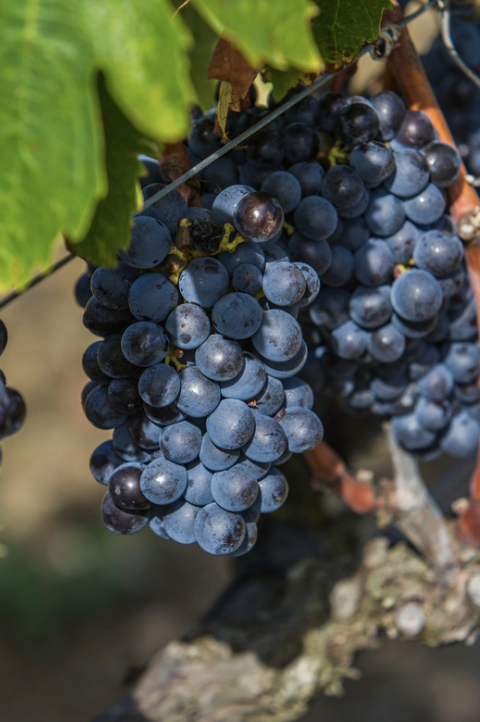
Flavours and Terroir of Tuscan Wines
Tuscan wines are incredibly varied, with notes ranging from cherry and plum to tobacco, cedar, baking spices, leather, balsamic, and espresso. Colors can range from purple to light red to deep burgundy. These wines can be light, medium, or full-bodied. It’s truly an incredible and diverse wine region.
One reason for the diversity of Tuscan wines is its terroir – the environment in which the grapes grow. The warm climate with relatively light rain produces wines with higher alcohol content, more body, and fruity flavours. The soil has varied compositions, ranging from sandy to limestone or clay, each of which lends different flavor profiles and aromas. Finally, the terrain – Tuscany has hills and slopes. As the rain washes away the nutrients on the surface of the soil, the roots must reach deeper into the soil to reach minerals, creating higher-quality grapes. Additionally, these hills allow for adequate sun exposure, UV radiation, and sufficient drainage, reducing risks of rot and mold.
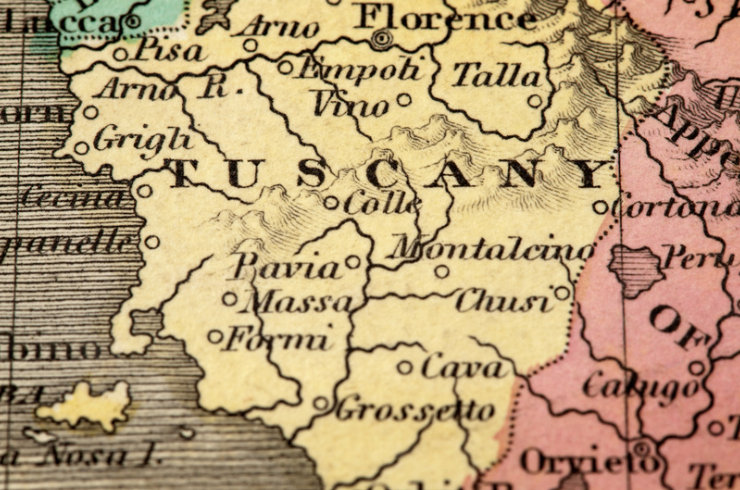
Pairings with Tuscan Wines
As mentioned, the wines of Tuscany are incredibly varied, but here are some popular styles and pairing ideas to introduce you to one of my personal favourite wine regions.
Casalote (2017) Chianti Classico Reserva
This wine is available from Mouse&Grape. It’s a gorgeous Tuscan wine, made from 95% Sangiovese grapes and 5% local grapes. It offers notes of plums, blackberry, and wood – a beautiful blend of fruit and oak aromas with a velvety mouthfeel. This wine spends a minimum of 5 years in oak and is produced in a limited production, ultimately creating a high-quality wine.
This full powerful wine pairs well with aged cheeses and grilled meats. This wine would pair well with an aged hard cheese – consider a Parmigiano, Pecorino Toscano, or Grana Padano. A soft, mild cheese would be overwhelmed by this power Chianti.
Rosso di Montalcino and Pecorino al Tartufo
This Tuscan sheep’s milk cheese available from Mouse&Grape includes Scorzone and Bianchetto truffles. This cheese has mushroom and umami flavours, creating an intoxicating, delicate cheese.
Consider pairing this wine with a Rosso di Montalcino – a vibrant Tuscan red wine made from 100% Sangiovese. These wines are from the same region as Brunello di Montalcino, benefiting from the same Mediterranean climate. This wine tends to be younger and less extracted than Brunello di Montalcino, with flavours of ripe red fruits, spicy overtones, and aromas of smoke or cedar. The earthiness of this wine accentuates the umami flavours of the Pecorino al Tartufo. The full mouthfeel and moderate acidity balance the richness of the cheese, creating a memorable pairing.
Vino Nobile di Montepulciano
This classic Tuscan wine style must be made of at least 70% Sangiovese grapes, along with 30% other local grapes from the province of Siena, such as Canailo or Mammlo, and up to 5% can be white wine grapes. These wines must be aged for a minimum of 24 months, while Riserva styles must be aged for at least 36 months. Oak barrels are often utilised as they provide a slow, controlled maturation. These wines are associated with notes of earth, baking spices, dark cherries, rich plums, and ripe strawberries, along with medium body, firm tannins, and medium to high acidity. These characteristics make it prime for aging as well, developing notes of tobacco, leather, and candied fruits.
Be careful not to confuse this wine with another notable Italian style – Montepulciano d’Abruzzo!
With these characteristics, Vino Nobile di Montepulciano could pair beautifully with numerous classic Italian dishes. Consider rich meat-based sauces, roast game, fatty pasta dishes such as Carbonara, or classic Pecorino Romano. Or consider less traditional pairings, such as a Mexican mole – made with a base of dried chilies and blended spices, this dish would pair beautifully with the earthy, fruity characteristics of Vino Nobile di Montepulciano.
While you can seek guidance when selecting wine and food pairings, don’t be afraid to experiment! You never know what you’ll discover!
Happy Sipping!
Arni
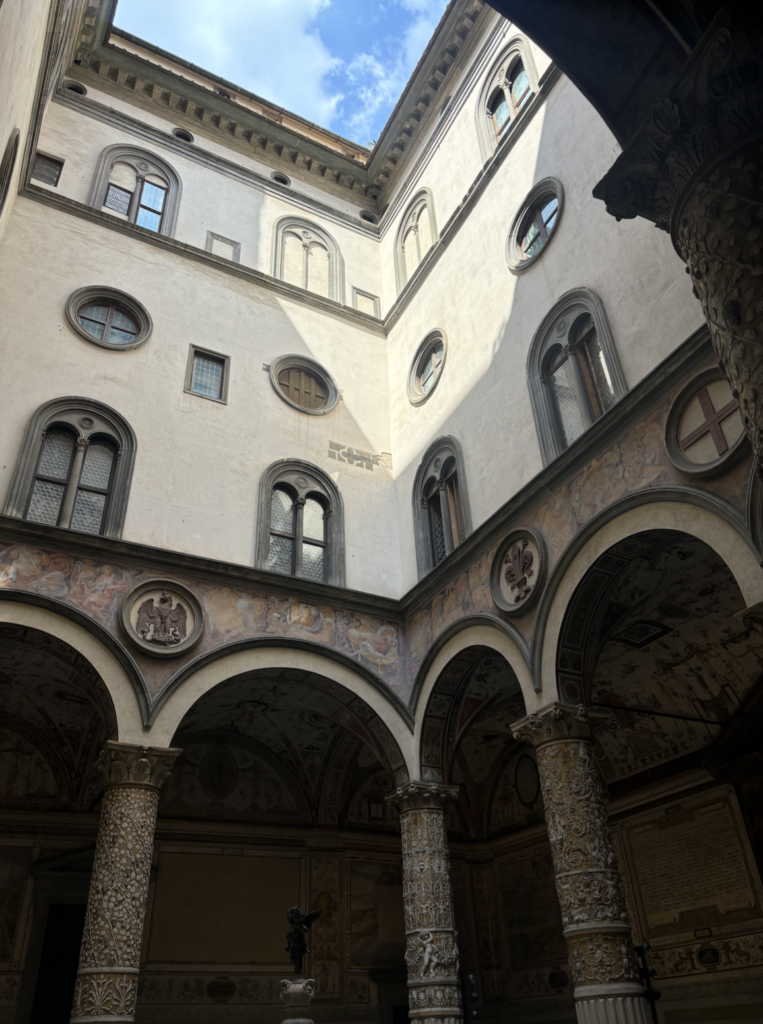
I only had a day to explore Florence, but it was certainly a memorable trip for me.
